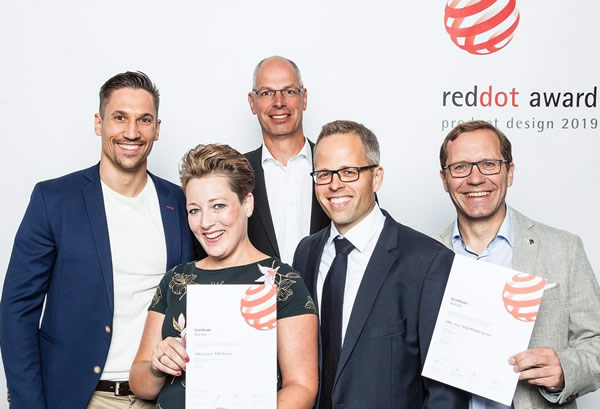As ABB continues to lead the field in combining modern design and innovative solutions for smart buildings, the company picks up two prestigious Red Dot Awards for its ABB-tacteo® sensor and ABB i-bus® KNX PEONIA® sensor.
Established in 1995, the Red Dot Awards recognize manufacturers and designers from all over the world. Judged by 40 international experts, who test and evaluate each entry, the 2019 awards saw 55 nations submit more than 5,500 products.

Commenting on the accolade, Oliver Iltisberger, Managing Director of ABB’s Smart Buildings business line said: “These awards are testament to our philosophy, which is all about combining high-end design with smart functionality to create intuitive and welcoming spaces for customers and end users.
“At ABB, we don’t just focus on the benefits of our solutions, but we also invest in the design to make sure that they complement the overall look and feel of a building. We are proud that our design-led approach to automation solutions has been recognized with such a prestigious award.”
ABB i-bus® KNX PEONIA® picked up a Red Dot Award in the Product Design category. An intuitive building system control device for all KNX applications, it features a frameless, slim and elegant classical design. The single device allows users to easily switch between heating or cooling and dynamically control blinds or shutters. It can also control the dimming of lights to enhance comfort levels in high-class residential buildings, hotels and other commercial spaces.
Launched in 2018, the ABB-tacteo® KNX sensor is the company’s first individually configurable building control sensor. It is an innovative control element for intelligent building management of luxury hotels, public buildings and high-class residential buildings.
Recognized in the Smart Home System and Automation category, each ABB-tacteo® KNX sensor is unique. The capacitive glass KNX sensor can be fully customized via an online configurator, which allows customers to choose which layout and labels they require. For added convenience, it features a proximity sensor, which can detect movement and switch on the backlight. The sensor also offers the ability to create flexible everyday environments for heating, blinds, lighting or comfort scenes.
“The growing interest in home and building automation is encouraging us to think differently about how we use innovation to create more comfortable living and working environments. Awards like the Red Dot demonstrate how technology and design can work hand-in-hand to create memorable and useable spaces for the future,” added Iltisberger.














